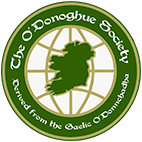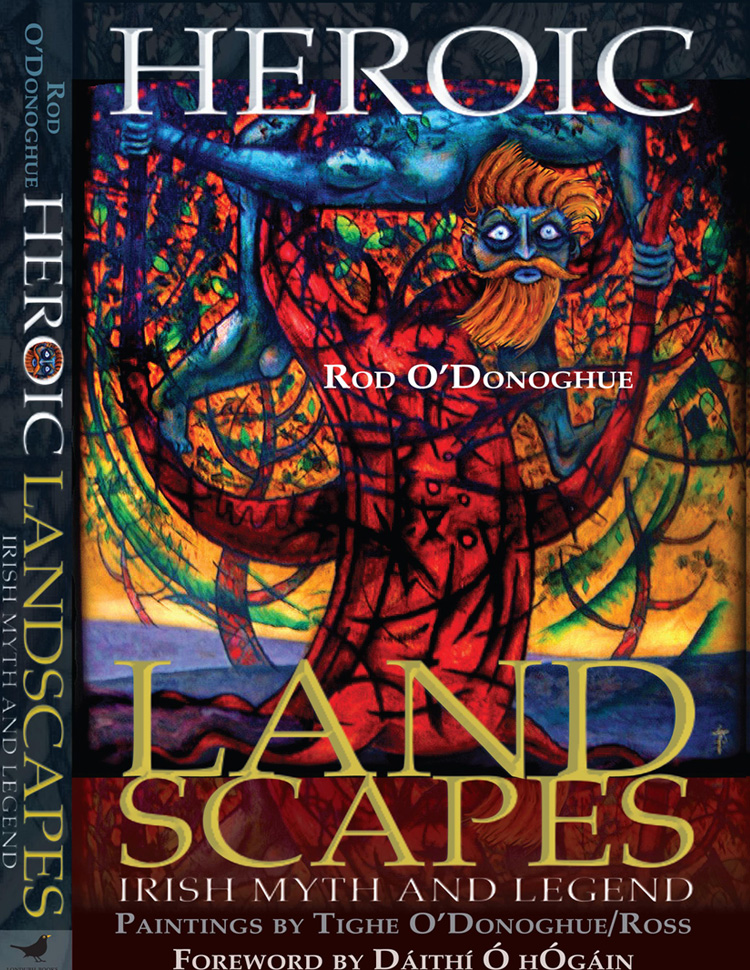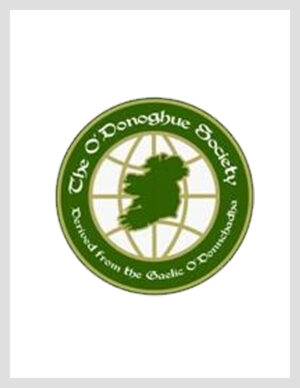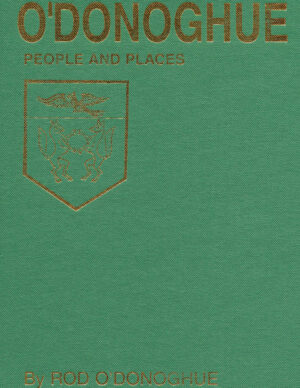Description
By Rod O’Donoghue;
Paintings by Tighe O’Donoghue/Ross;
Foreword by Professor Dáithí Ó hÓgáin
George William Russell’s line in the poem ‘Ancient’ – ‘A ladder the soul may climb’ – might have been written to describe Irish folk tradition and there is no doubt of its continuing appeal for readers and lovers of literature in Ireland and abroad. For centuries, storytellers (seanchaíthe) handed down, first orally and then in writing, tales of long ago, many prehistoric, others from the early Christian period when kings, saints and heroes mingled. Myths and folklore are stories of extraordinary and wondrous people, creatures, places and events: of voyages and monsters, of heroes like Cú Chulainn and Fionn mac Cumhaill, of epic battles, of beautiful maidens lost and won, who sometimes turned into butterflies or animals.
In Heroic Landscapes, folklore enthusiast and dedicated scholar, Rod O’Donoghue, sets out to give a coherent account of the different strands and eras of Irish myth and legend – how the kaleidoscope of stories fit together – and to present them in a way that is accessible to the general reader. Eminent folklorist Dáithi Ó hÓgáin describes Heroic Landscapes as ‘intriguing in its scope, honest and alluring… always significant in its delineation of the human spirit’. A selection of the evocative paintings of Tighe O’Donoghue/Ross with their mythological and historic landscape of the imagination complements the rich heritage of the tales chosen by the author.
Price: £10.00; Paperback with 256 pages, Published by Londubh Books, Dublin, May 2011




Roddy O’Donoghue –
Having twice read Heroic Landscapes it is time to say thank you. Many misconceptions have been corrected for me, and half-known stories finished.
Natalie Lough –
Great book! Really enjoyable read that stirs the imagination.
Robert Pierse, eminent Irish lawyer and author –
By the way, I would like to take this opportunity to mention that I have read your latest book, that I purchased in Donegal during the summer. I must say that it is an enjoyable text, with some nice hypotheses.
Tim Donahoo –
Rod O’Donoghue’s Heroic Landscapes: Irish Myth and Legend is a great book for those interested in what it means to be Irish but more importantly, it is for the average reader at the beginning of their personal discoveries. There are just too many random facts and stories out there to see the full picture, but Rod’s book, after many years of research and with his knowledge of the Irish language, tells these stories in a way that just plain makes sense. He begins his book by stating the clarity he wanted to bring to the Irish tradition and that his desire was for his readers to finish his book saying ‘Now I see how it all fits together’ and well….”Now I see!” There are many great books out there about the Irish but the most important thing in my mind is simply getting started. If you’re looking for one stop shop to all things Irish…this is your book! Thanks, Rod!
Jo O’Donoghue, publisher –
In Ireland of the Welcomes, Jo Kerrigan wrote of the sculpture road to Killarney that Tighe O’Donoghue/Ross created: ‘you are travelling on no ordinary route’. To look at any of the paintings reproduced in this book (as well as the cover image of Suibhne Gealt) is to be impressed: to experience the cumulative effect of the strange exotic vision of thirty-two of them is to share a journey through the collective unconscious of the Gaelic race in the company of an artist of rare cosmic imagination.
Art critic Hilary Pyle called Tighe O’Donoghue/Ross ‘disconcertingly confident’ and this confidence is evident in his choice of themes: nothing is too vast or profound for him to undertake. To take one example from among many, the cosmic battle of light and dark is exemplified in the battle to the death of the white bull of Connacht and the brown bull of Cooley in the artist’s imagining of the scene from one of the world’s great epics, the Táin Bó Cuailnge.
Jimmy Deenihan TD., Minister for Arts –
Minister Deenihan said that our myths and legends are the oldest in Europe after ancient Greece and Rome. ‘This exciting book Heroic Landscapes gives us new insights into our rich Irish heritage, full of heroic tales and sagas.’
‘This book tells these tales in a most readable form and relates these classic stories to the modern world and integrates them with the latest information from genetic evidence and the findings of science,’
Concluding Minister Deenihan also congratulated Rod O’Donoghue on his initiation of The Irish Folklore Centre. ‘The centre provides an opportunity to make sure all the old tales and stories, some perhaps not yet recorded, have a place to document them for posterity’ said Minister Deenihan.
Robert Pierse, eminent Irish lawyer and author –
‘This is a book you will want to return to, and you’ll find new things each time.’
‘This book will be of interest to the general reader as well as becoming an important text for students from leaving cert to PhD candidates.’
‘The author is a dedicated scholar whose years of research have produced an important work.’
‘Colour is a word which applies to this work – from the tales and stories to the paintings which so evoke the drama of the subject.’
Dáithí Ó hÓgáin, Emeritus Professor of Irish Folklore, University College Dublin –
In the company of the old writers, we are on the same wavelength as Rod O’Donoghue and his charming book. Here again we find an author mining the old sources and rearranging them, like his predecessors of old did, in a consistent and readable format for the people of his own time. It is important for Irish people today to know this tradition, to appreciate this lore, to value these stories as a major part of their identity. One great failing of Irish cultural enthusiasts is that, while they very often insist that their fellow countrymen and countrywomen should respect their heritage, these same enthusiasts very seldom explain in a clear and interesting way the major outlines of that heritage. In this regard, a good and worthwhile lesson can be learned from Rod O’Donoghue, who presents the material in so readable a fashion. This is Rod’s own book, intriguing in its scope, honest and alluring. If, like the mediaeval writers, it can sometimes be challenging in its loyal acceptance of tradition and its methodology, it is always significant in its delineation of the human spirit. The old scholars, like his 17th-century relative Séafraidh, would like this; and so also I think will a wide international audience who are increasingly becoming aware of Ireland’s contribution to the understanding of human imagination and creativity.